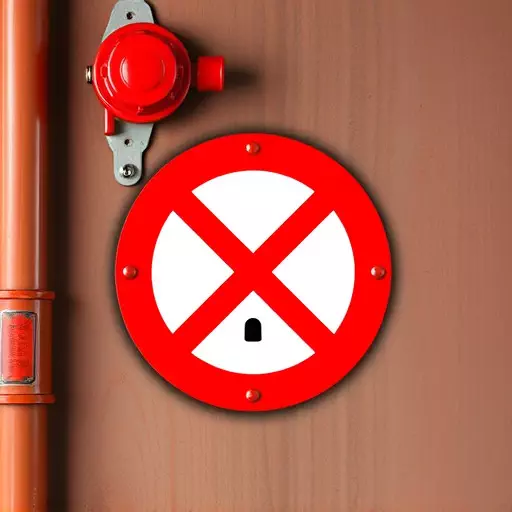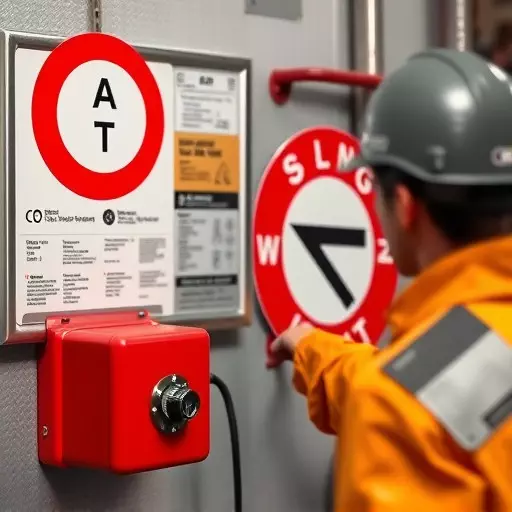Lockout/Tagout (L/T) training is a critical component of industrial safety, ensuring worker protection during maintenance and repair by controlling energy sources. OSHA's updated L/T standards emphasize comprehensive energy control procedures education, empowering employees to safely manage equipment through proper locking device use and safe work practices. Effective compliance training reduces risks associated with energy sources, fostering a culture of safety. Integrating interactive workshops, scenario-based exercises, and regular protocol reviews enhances knowledge retention and encourages continuous improvement. Case studies demonstrate successful L/T practice implementations, highlighting the value of tailored training programs in achieving OSHA standards and mitigating workplace risks.
Stay ahead of safety regulations with the latest updates on lockout/tagout protocols. This comprehensive guide explores OSHA’s role and the newest standards in lockout tagout compliance training, essential for any industry to prevent hazardous energy releases. From understanding fundamental safety protocols to effective training delivery methods, we delve into best practices and real-world case studies. Master energy control procedures training and ensure worker safety with these indispensible insights.
- Understanding Lockout/Tagout: A Fundamental Safety Protocol
- OSHA's Role and the Latest Lockout Tagout Standards
- Energy Control Procedures: Essential Training Components
- The Evolution of Lockout Tagout Training Methods
- Best Practices for Compliance and Effective Training Delivery
- Case Studies: Success Stories in Lockout/Tagout Implementation
Understanding Lockout/Tagout: A Fundamental Safety Protocol
Lockout/Tagout (L/T) is a critical safety protocol designed to prevent accidents and injuries in industrial settings by ensuring that energy sources are properly controlled before maintenance or repair work begins. This process involves isolating equipment from its energy supply, either through physical lockout or tagging out, and verifying the de-energized state through comprehensive testing procedures. Compliance with OSHA’s lockout tagout standards is not just a legal requirement but also a cornerstone of workplace safety, preventing electrical and mechanical hazards that could lead to severe injuries or fatalities.
Effective lockout/tagout compliance training, including energy control procedures training, equips employees with the knowledge and skills necessary to implement this fundamental safety protocol accurately. It involves understanding when and how to lock out or tag out equipment, proper use of locking devices, and safe work practices during energy-related operations. Such training ensures that all personnel involved in maintenance activities are aware of their responsibilities, minimizing risks and fostering a culture of safety within the organization.
OSHA's Role and the Latest Lockout Tagout Standards
OSHA plays a pivotal role in ensuring workplace safety across industries, particularly regarding lockout/tagout procedures to prevent energy-related injuries and fatalities. The agency’s commitment to updating its lockout tagout standards reflects the ever-evolving nature of work environments and technologies. These latest standards emphasize comprehensive training programs, focusing on energy control procedures as the cornerstone of worker protection.
The updated guidelines provide a structured framework for employers to implement effective lockout/tagout practices. This includes detailed instructions on identifying potential hazards, developing specific energy control plans, and conducting thorough training sessions for employees. By promoting such compliance training, OSHA aims to equip workers with the knowledge and skills needed to safely manage equipment during maintenance or repair, thereby reducing risks associated with energy sources.
Energy Control Procedures: Essential Training Components
In the realm of industrial safety, lockout/tagout compliance training is a vital component in mitigating risks associated with energy sources. The OSHA lockout tagout standards serve as a blueprint for organizations to safeguard workers from unexpected equipment activation. Effective energy control procedures training equips employees with the knowledge and skills to identify, isolate, and control energy sources during maintenance or repair activities.
This training goes beyond mere compliance; it empowers workers to contribute to a safer work environment. By understanding the intricacies of energy control procedures, employees can confidently navigate the intricate labyrinth of industrial equipment. Such training ensures that energy sources are properly secured through lockouts and tagouts, preventing accidental activation and potential harm.
The Evolution of Lockout Tagout Training Methods
The evolution of lockout/tagout (L/T) training methods has been driven by a need to enhance safety and compliance with OSHA’s strict lockout tagout standards, which aim to protect workers from unexpected machine activation during maintenance. Historically, L/T training relied heavily on traditional classroom settings, where theories and procedures were explained. However, with the advancement of technology and an increasing emphasis on practical skills, training has transitioned to more interactive and hands-on approaches.
Today, OSHA’s lockout tagout compliance training goes beyond basic knowledge transfer. It incorporates energy control procedures training, ensuring workers understand how to identify and mitigate energy sources during machine maintenance. This includes learning various energy control methods, such as lockouts, tags, and other protective measures, to prevent accidents in industrial environments. The shift towards more practical and comprehensive L/T training reflects the changing dynamics of the workplace and OSHA’s commitment to reducing workplace injuries.
Best Practices for Compliance and Effective Training Delivery
Staying ahead of OSHA’s lockout/tagout standards is paramount for any industry to maintain compliance and ensure worker safety. Effective lockout tagout compliance training involves more than just ticking boxes; it requires a comprehensive approach that combines thorough understanding and practical application. Start by integrating interactive workshops and scenario-based exercises into your training programs, allowing employees to experience and practice energy control procedures in a controlled environment. This hands-on method not only improves knowledge retention but also fosters critical thinking and problem-solving skills essential for real-world situations.
Regular reviews and updates of safety protocols are crucial, especially with dynamic industry standards. Utilize these training sessions as platforms for discussing recent changes to OSHA lockout tagout standards, ensuring everyone is aligned with the latest regulations. Encourage open communication where workers can ask questions and provide feedback on existing procedures, fostering a culture of continuous improvement. This two-way interaction strengthens engagement, making it easier to implement and adhere to energy control measures consistently, ultimately reducing risks associated with equipment deactivation.
Case Studies: Success Stories in Lockout/Tagout Implementation
In the realm of industrial safety, case studies offer invaluable insights into successful implementations of lockout/tagout (L/T) practices. These real-world examples illustrate how organizations have effectively navigated OSHA’s lockout tagout standards, ensuring compliance and enhancing workplace safety. For instance, a manufacturing facility faced the challenge of outdated energy control procedures, leading to a comprehensive review and overhaul of their L/T training programs. By conducting thorough assessments and involving employee feedback, they developed tailored energy control procedures training that empowered workers to actively participate in safety protocols.
The result was a significant reduction in accidental lockouts and an improvement in overall compliance with OSHA guidelines. This success story underscores the importance of adaptive lockout tagout compliance training, demonstrating that proactive measures can foster a culture of safety where every employee is equipped to contribute to risk mitigation. Such initiatives not only meet regulatory requirements but also serve as a testament to the transformative power of well-designed energy control procedures training in diverse industrial settings.


